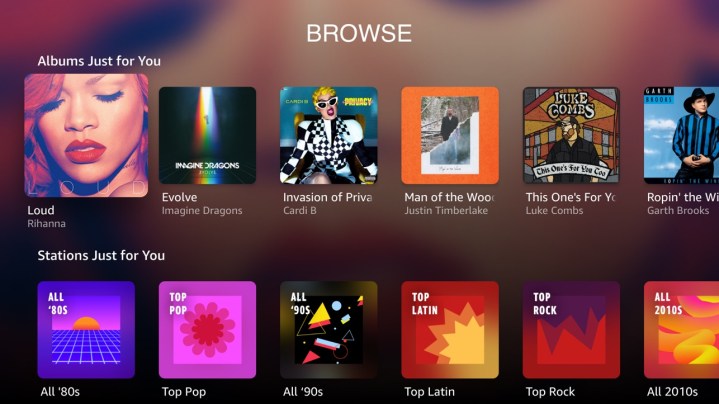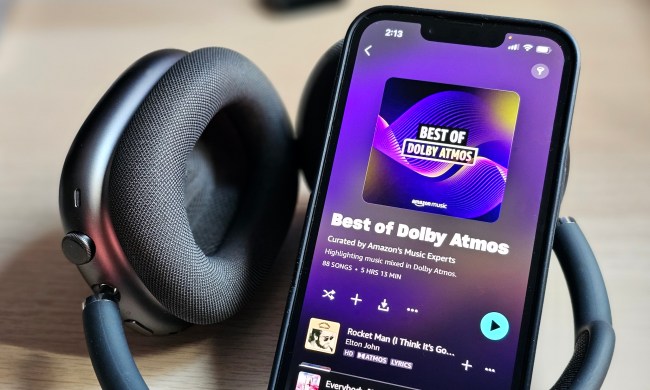
Listening to music on your TV? Why not? According to a recent survey by YouGov, more than 40% of people who own a smart TV want to use it to listen to music. Perhaps that’s in part why Amazon chose to launch its first music app for Apple TV.
Starting Thursday, October 10, you can download the Amazon Music app from the App Store for Apple TV — it’s compatible with Apple TV 4K and Apple TV HD running tvOS 12.0 and later. If you live in the United States, United Kingdom, Australia, New Zealand, Brazil, Canada, France, Italy, Spain, Germany, Mexico, Japan, or India, all you need is a Prime Music or an Amazon Music Unlimited account to start streaming.
Once the app is downloaded, you need to activate your Apple TV as a recognized device with Amazon. On launching the app, it will display a six-letter pairing code. Using a browser on another device, go to https://amazon.com/code and enter that code when asked. You’re all done.
The Amazon Music app will give you access to the full library of millions of songs, plus albums, artists, and playlists. You can also play content from your My Music personal library. But perhaps the best feature, given that this on a TV, of course, is the scrolling lyrics option — perfect for an impromptu karaoke session, or just practicing for the next time your friends come over.
Unfortunately, subscribers to Amazon’s new Amazon Music HD tier of service won’t be able to stream the CD and hi-res versions that they’re entitled to. At the moment, the Apple TV app doesn’t support either of these higher-quality formats. Instead, you’ll be offered the same catalog as Amazon Music Unlimited subscribers.
The pairing of Amazon Music and Apple TV seems a bit odd, especially when you consider that there’s no Alexa option on Apple’s media streamer. Apple is beginning to open up Siri to third-party music services like Spotify, but even then, it hasn’t rolled out that feature on its HomePod speaker — just iPhones and iPads for now.
Will Siri eventually be able to start Amazon Music playback on the Apple TV? We’re guessing that will happen eventually. In the meantime, Amazon seems content to just make its music service available on more devices. “We believe that listeners should be able to stream music simply and easily on any device they choose,” Karolina Joynathsing, director of business development for Amazon Music, said in a press release.



